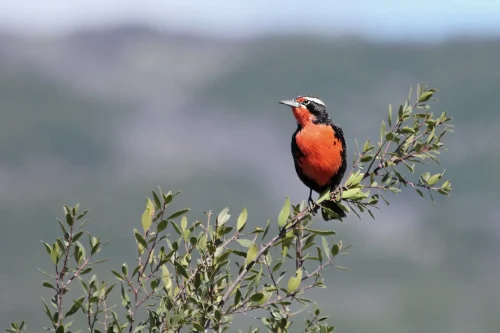
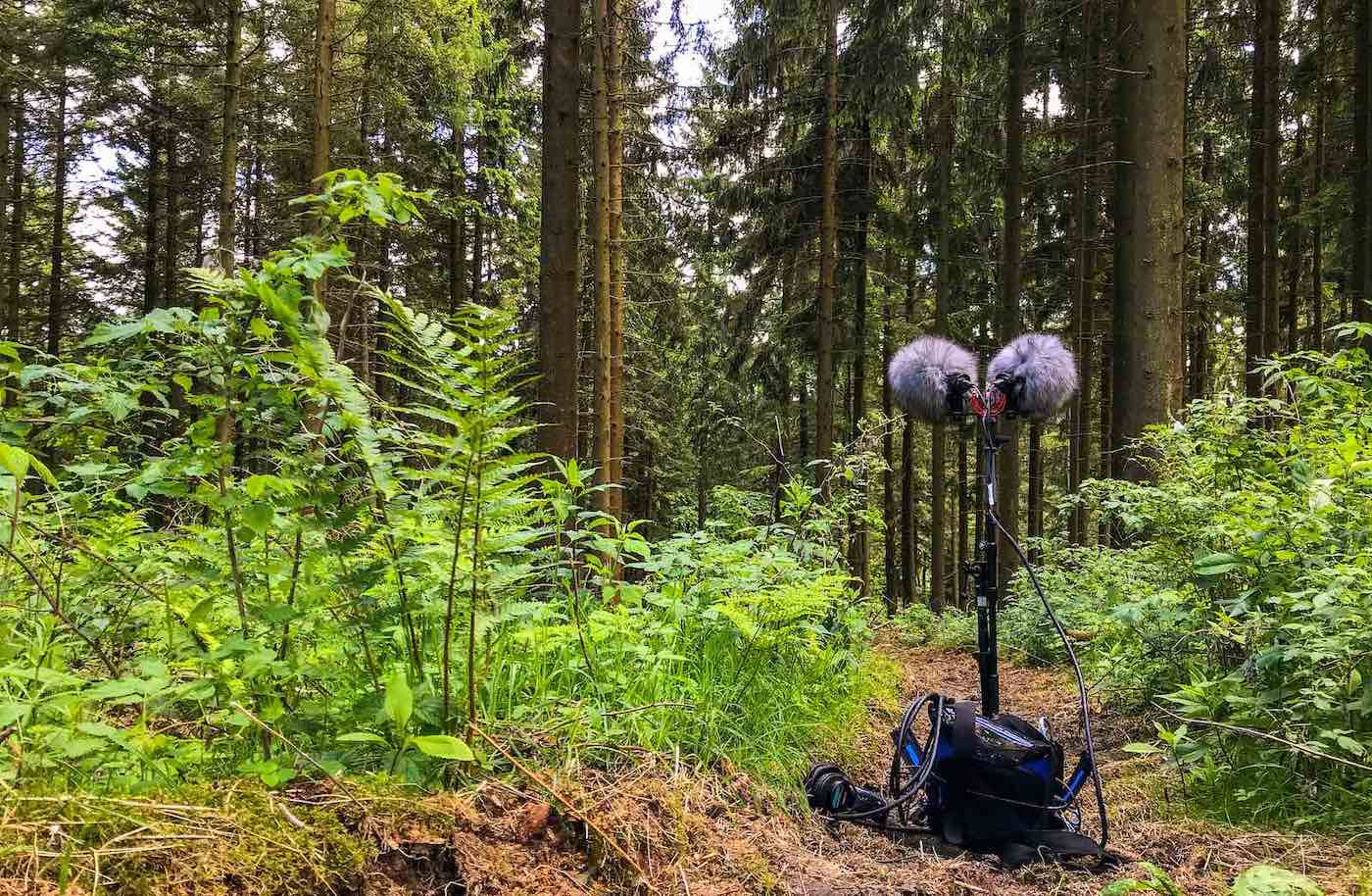
In this article, we invite you to take a look behind the scenes of our Forest Ambiences sound library. Jonas will guide you through the various forests and recording locations he visited for this collection, delve into the challenges and give you some valuable tips. With this knowledge, you’ll be well-prepared to start your own recording adventures and capture the beauty of nature.
Forest Ambiences is a comprehensive sound library designed to bring any forest environment to life in your productions. We often found ourselves missing a well-rounded palette of forest sounds that spanned across all seasons. We needed nature atmospheres free from noise pollution, clean wind recordings and isolated bird calls. This inspired us to to create this library, making it possible for you to use the sounds in your work effortlessly.
The quest for the most authentic forest sounds took me on extensive hikes through multiple national parks. For capturing the full spectrum of nature’s auditory palette, I often stayed overnight either within the parks or in nearby locations. This allowed me to record the tranquil ambience of the forest at night and capture the enchanting dawn chorus of awakening birds as the sun began to rise. The forests I ventured into spanned a range of regions, including the Black Forest, the Eifel, the Harz, Hainich and Sauerland in Germany, as well as parts of Western Poland. This wide geographic area ensured that I could record the characteristic sounds of coniferous, deciduous and mixed forests, which are all part of the Central European forest landscapes.
Each forest type has its own biodiversity with bird species adapted to the habitat. Coniferous forests, for example, are less densely populated than deciduous and mixed forests and are therefore often more quiet. The diverse tree population in mixed forests, on the other hand, provides refuge for countless creatures. It was in these forests that I was able to record the most lush dawn choruses in spring I have ever heard. Traveling through all these areas during different seasons made me realize the wonderful diversity of nature with its unique sounds. The entire process of creating the Forest Ambiences sound library has been deeply rewarding and will stay in my mind for a long time.
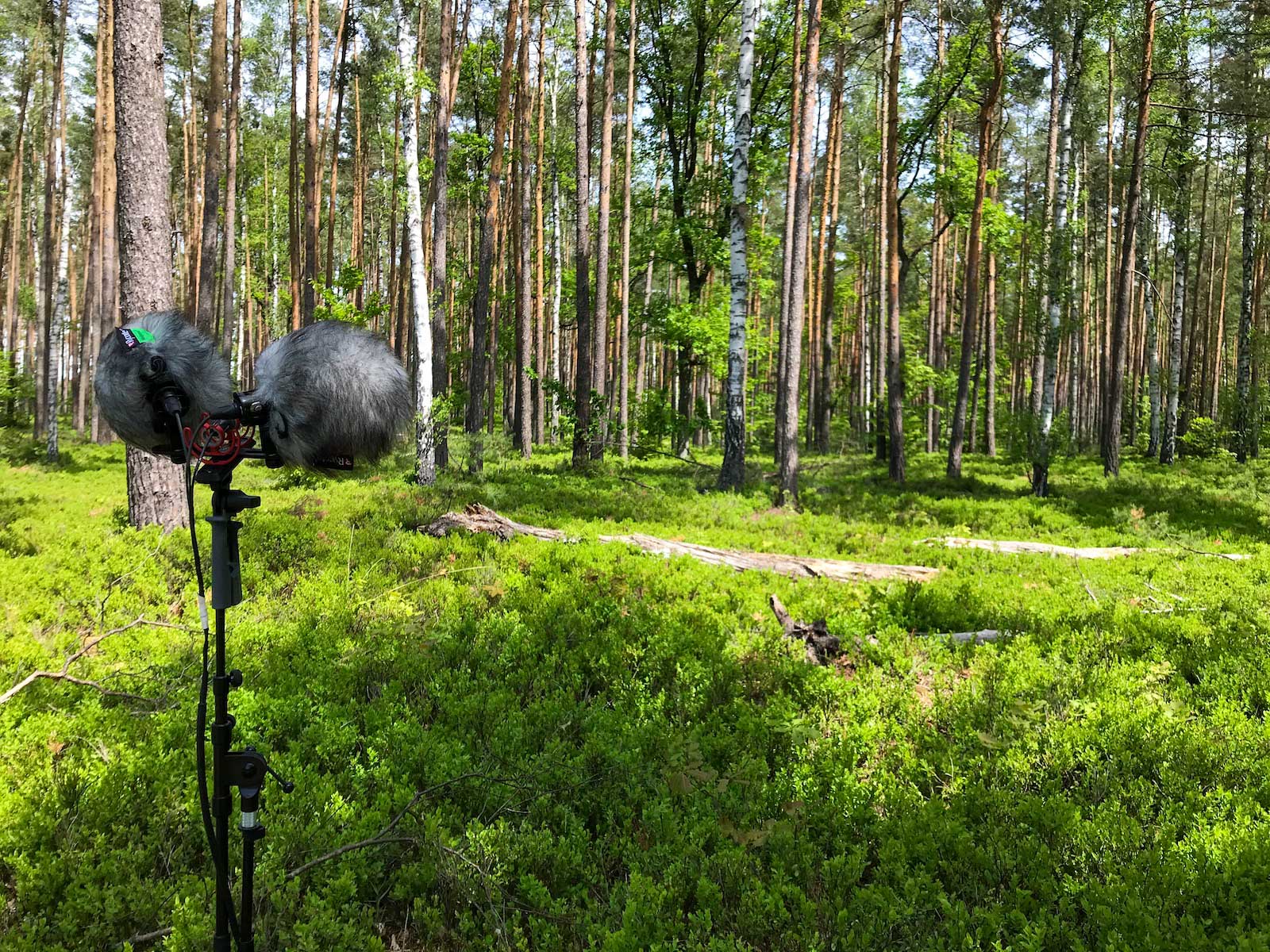
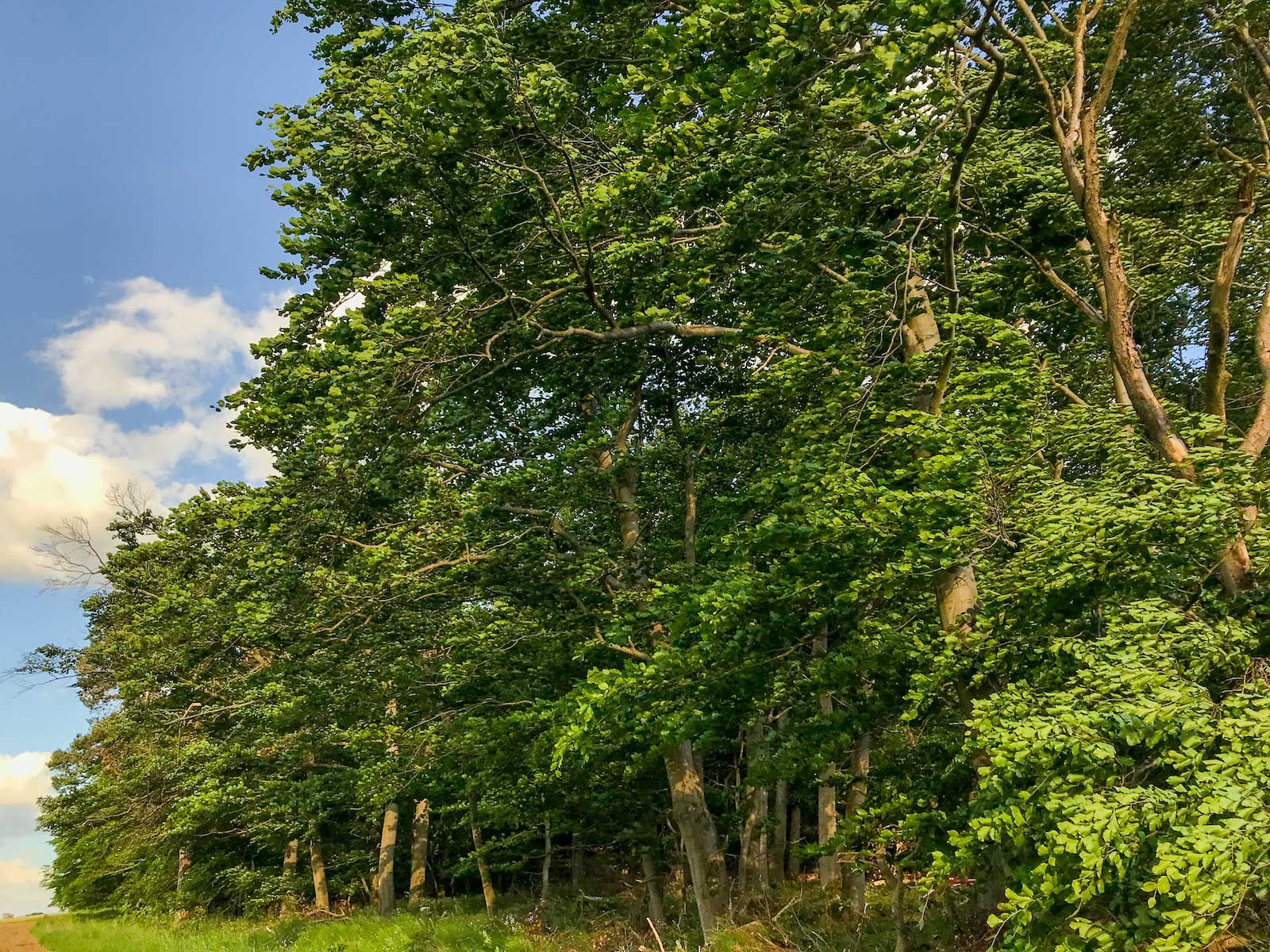
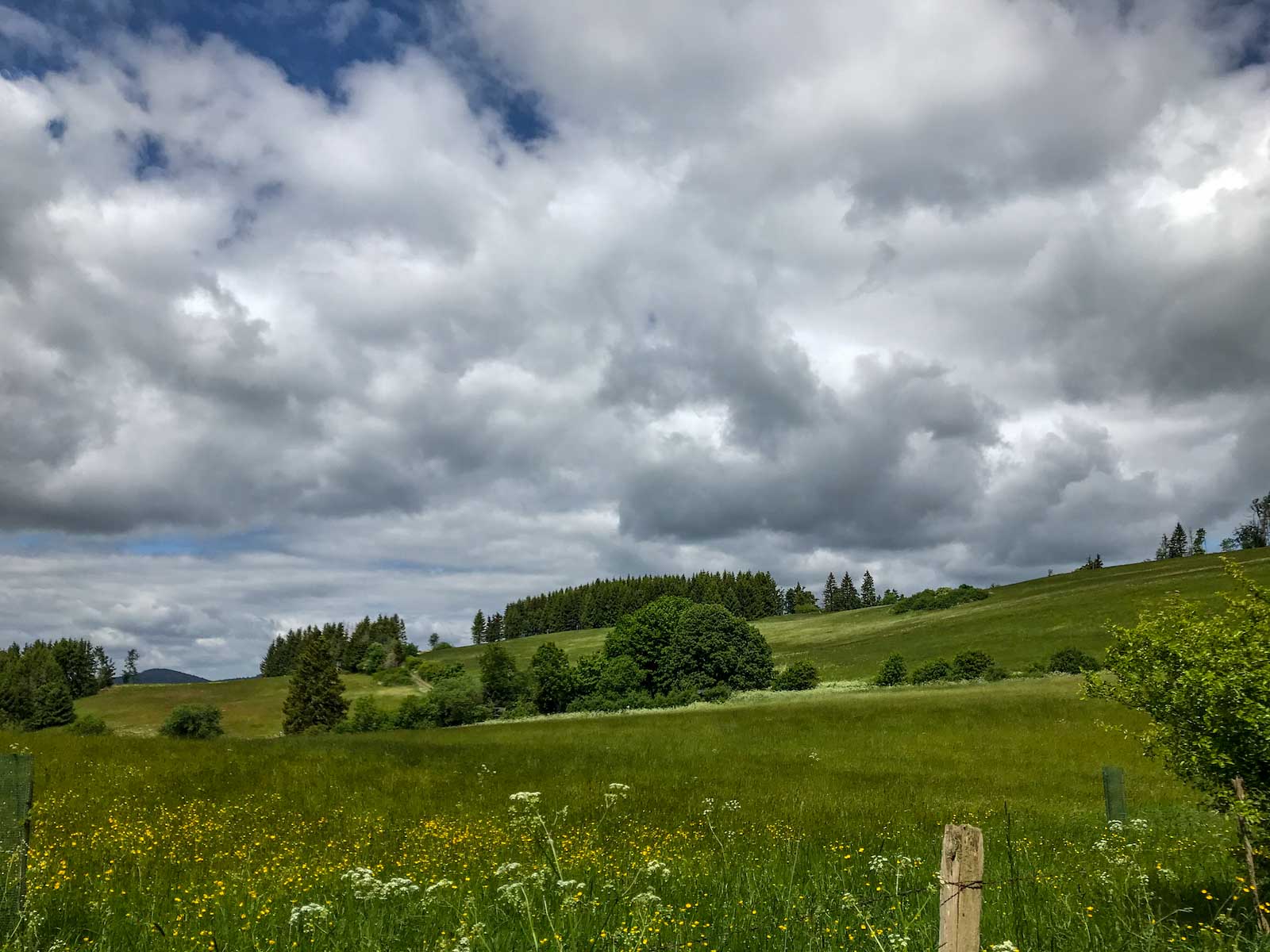
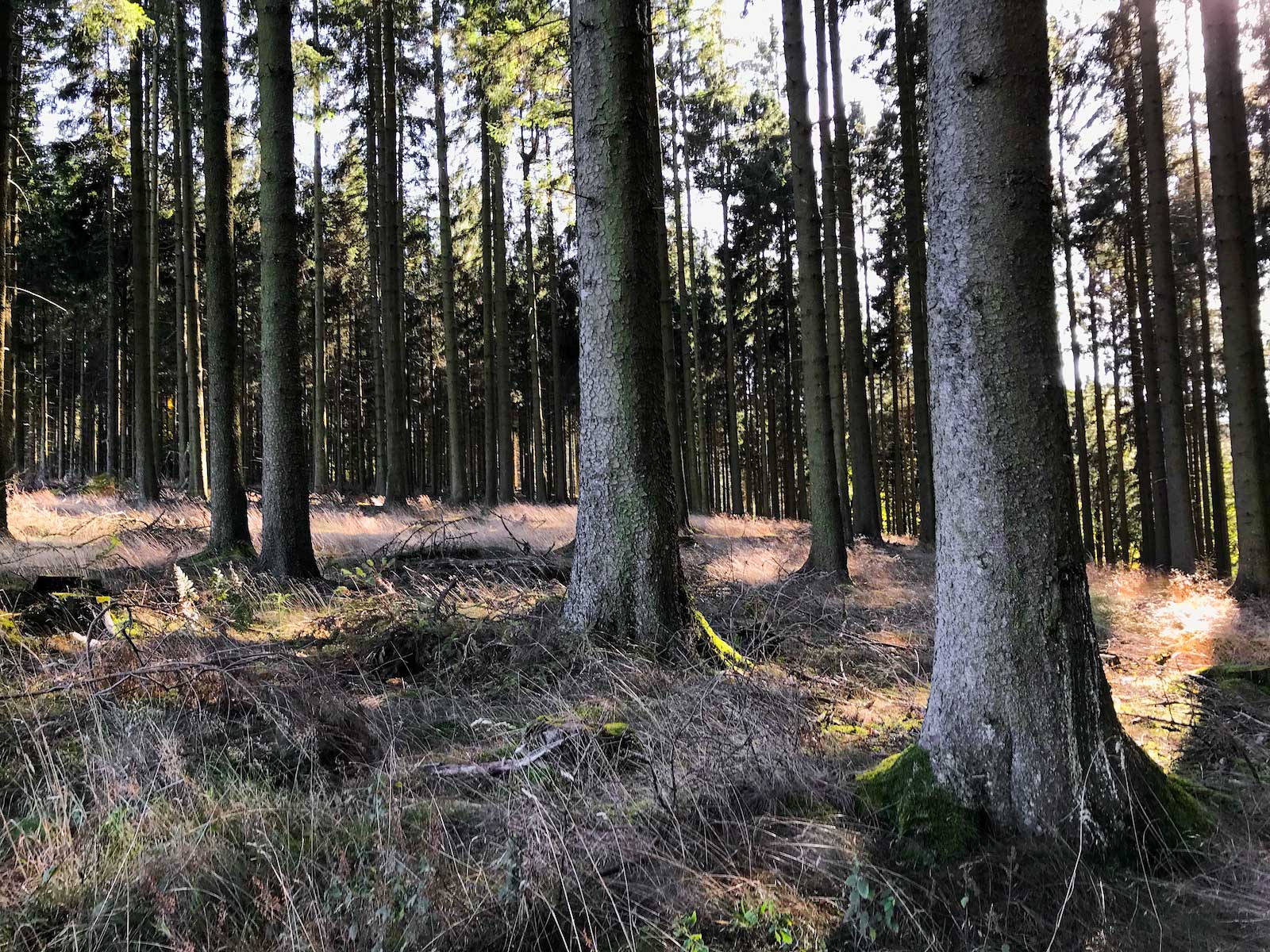
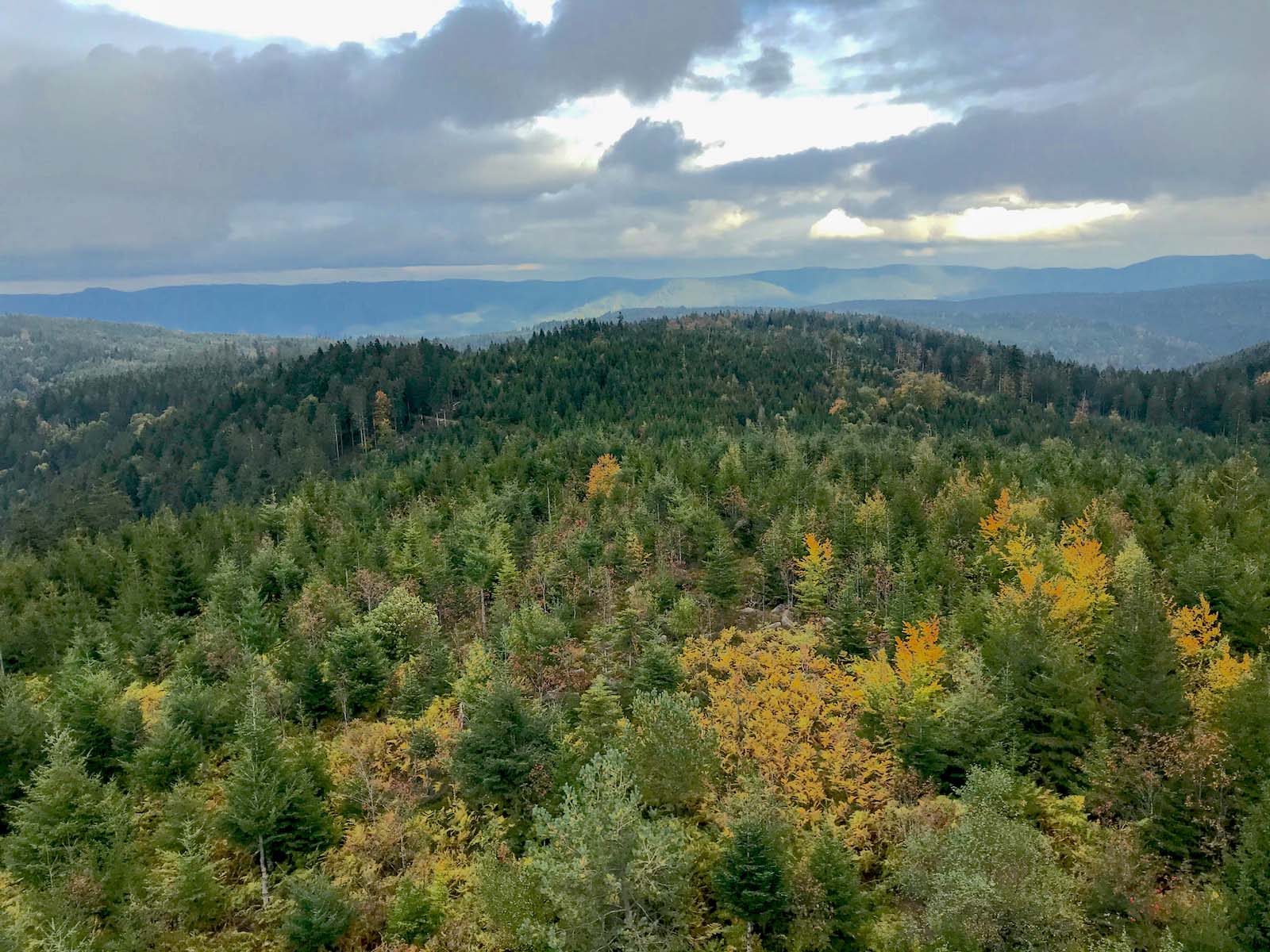
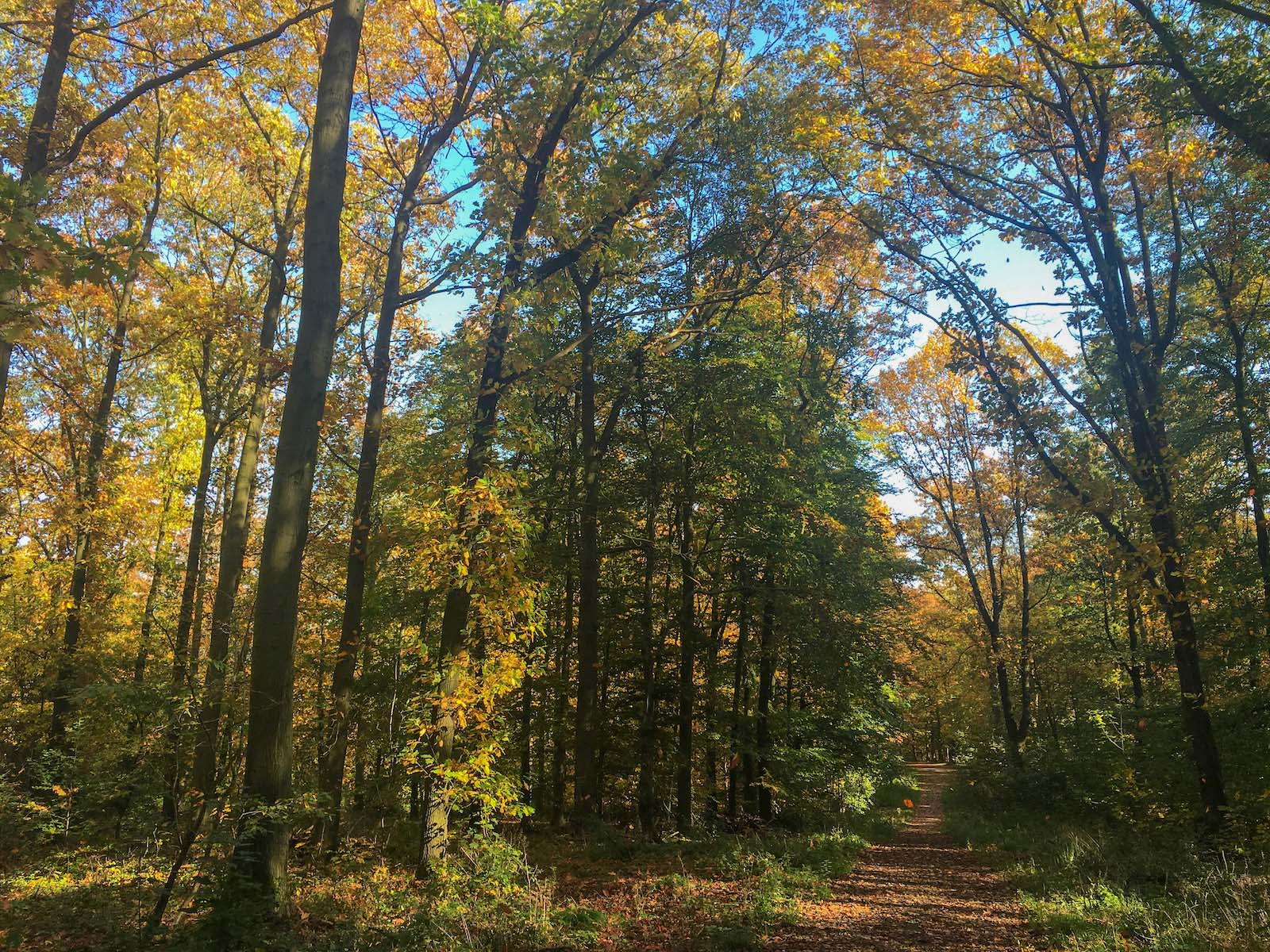
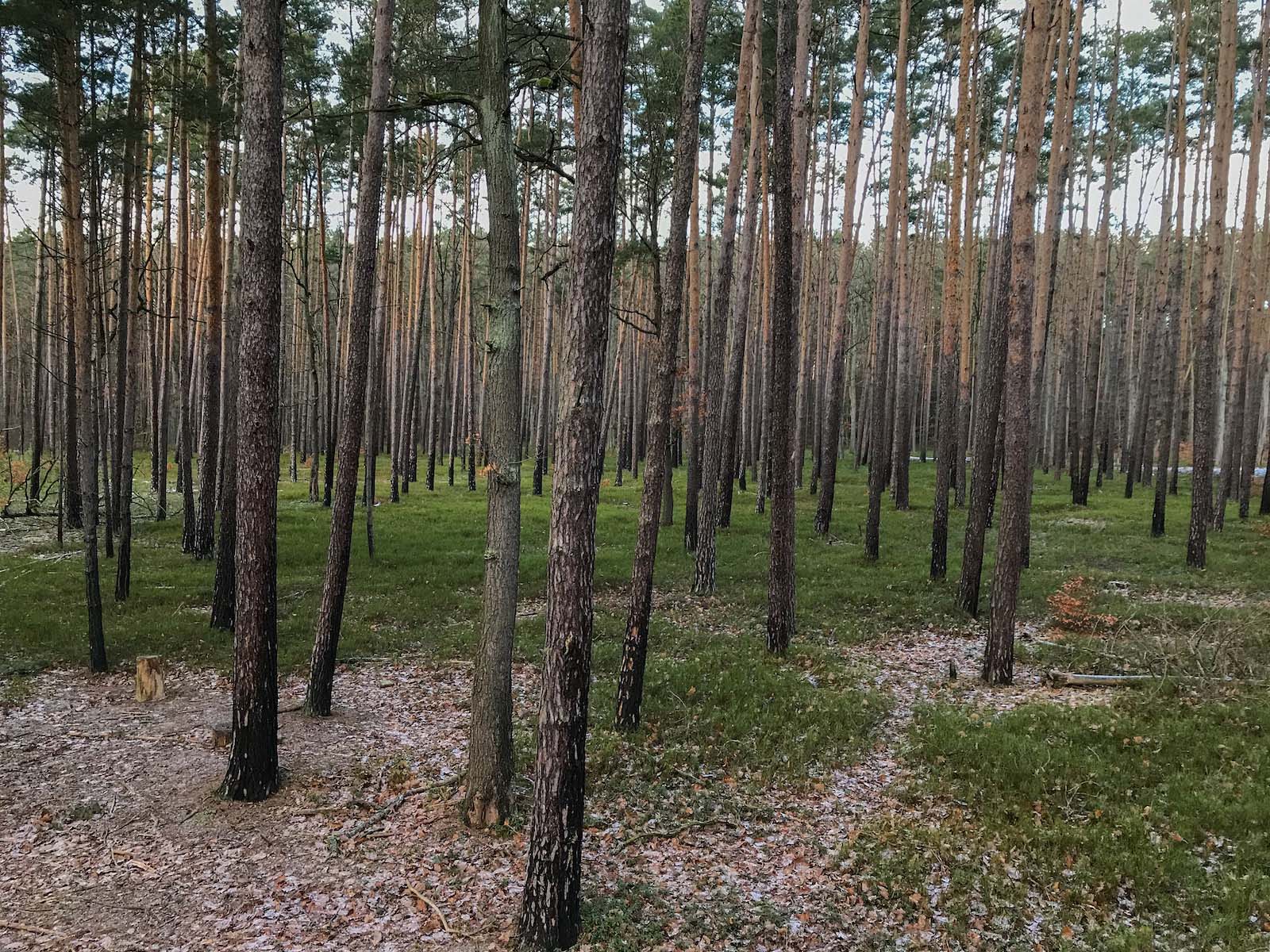
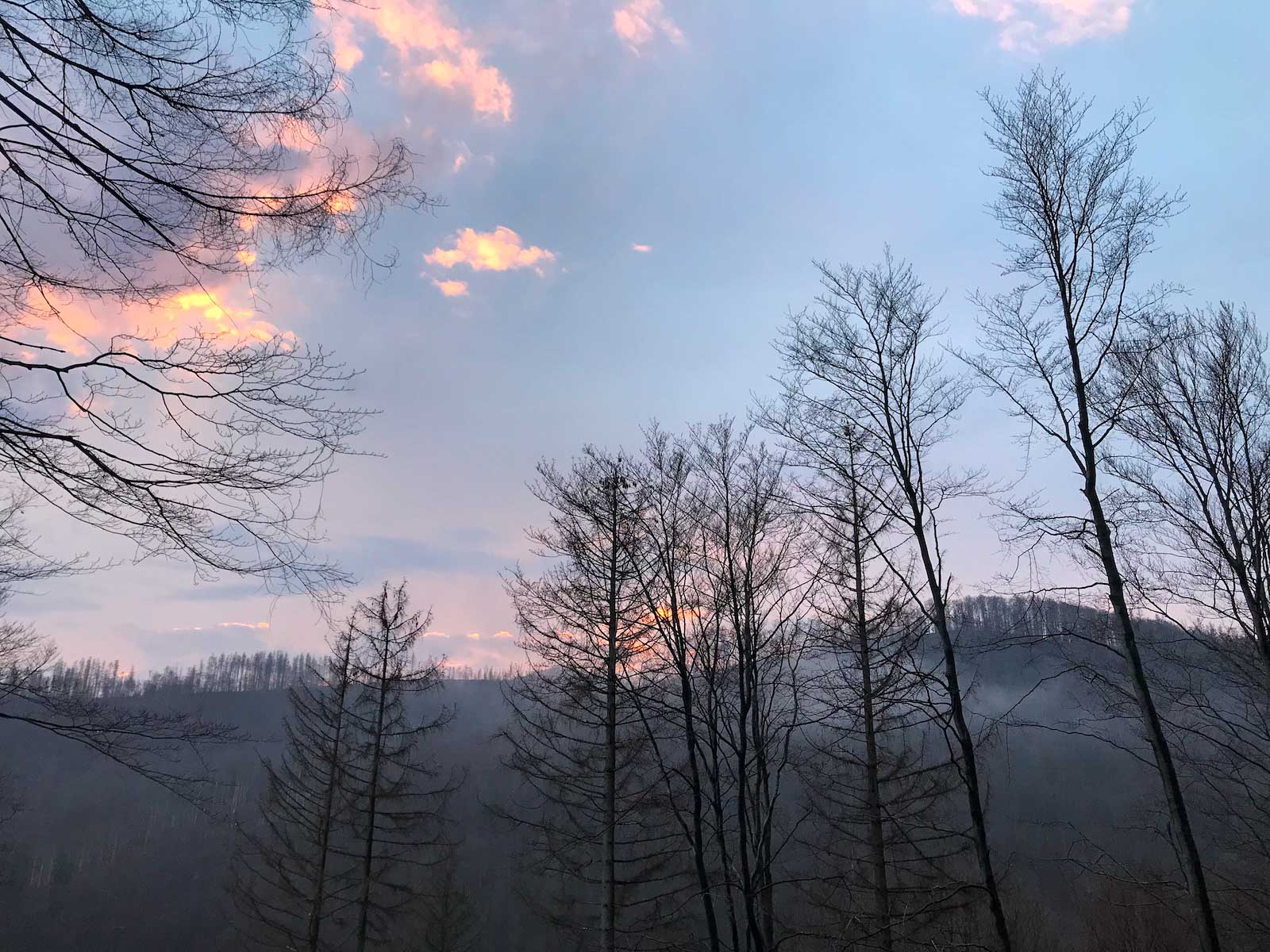
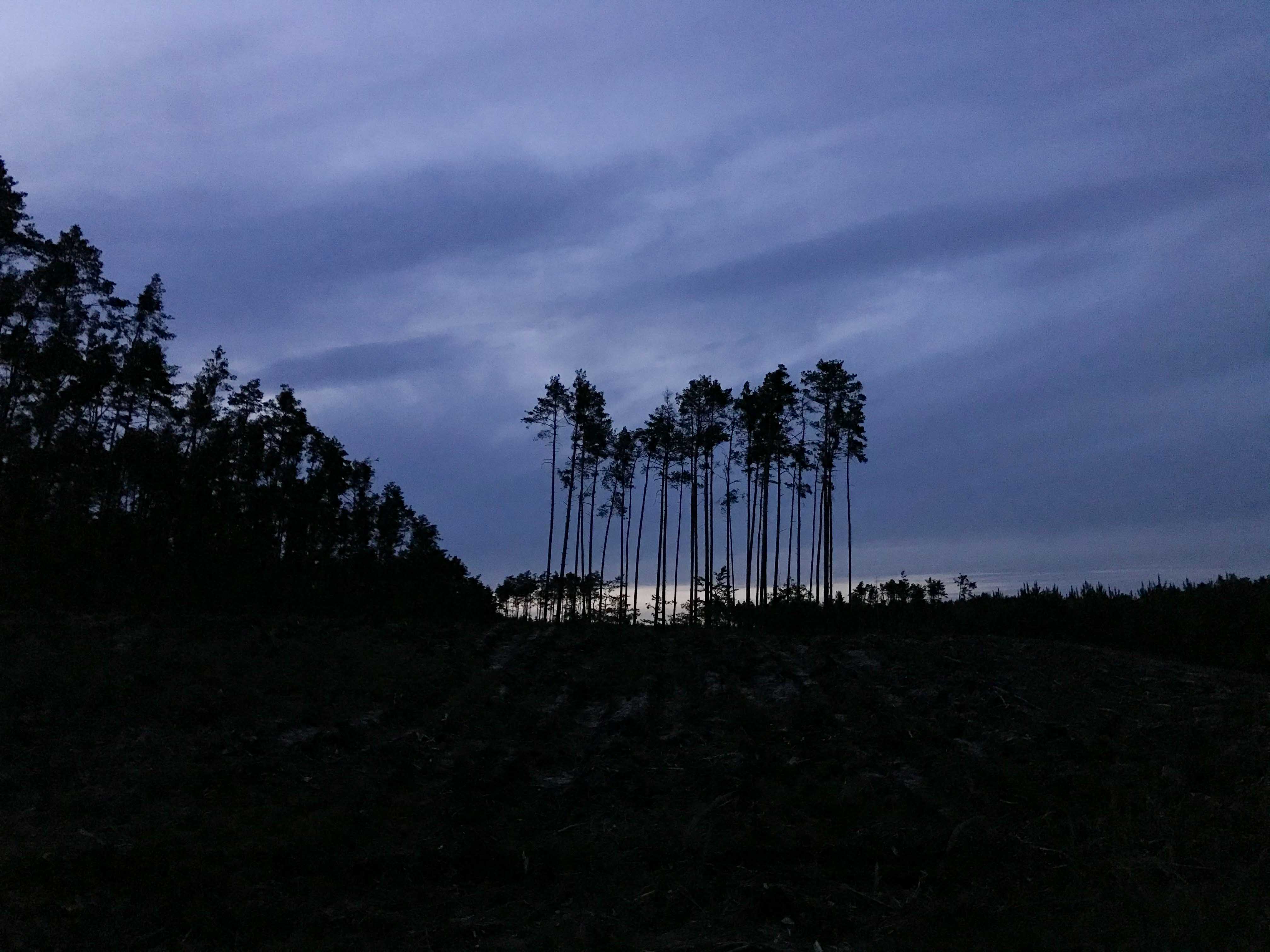
Recording clean ambiences in Central Europe can be particularly challenging due to noise pollution. The roar of aircrafts and the distant hum of traffic often can easily ruin a recording session. It takes a fair amount of discipline and patience to finally capture the perfect sound and you shouldn’t be frustrated if you don’t get your desired recordings right away – that’s part of it!
To mitigate the problem of human-made noise, recording in remote national parks is an effective strategy. Here, too, you will hear airplanes from time to time, but you can use the time between recordings to become aware of your surroundings and find the best spot for your microphones. It’s very important not to disturb the habitat of the animals in the forest. Move quietly and carefully and in the best case do not leave the paths. Besides the respect you give to nature, the possibility arises that you will get better recordings if you don’t startle the animals. I’ve been lucky a few times to have birds land right above me in the trees and let out their calls. That would not have been possible if I had walked loudly and carelessly through the forest.
A big challenge was also the amount of time invested in this library. I had to visit forest areas more than once in order to record sounds of the different seasons. Autumn and winter in particular were more difficult to record, as forests are less densely populated at these times and therefore much quieter overall. As mentioned above, the solution here is also not to give up and remain patient. In cold seasons, warm clothing is also necessary. You have to expect to walk for hours through cold and once it starts to rain or snow, it can be uncomfortable.
Dealing with wind presents its own set of natural challenges. While high-quality wind shields are essential tools, sometimes they aren’t enough. That’s where natural solutions come into play. I often scout for natural wind barriers such as piled tree trunks, hedges, large rocks or ground sinks in the terrain to help block out wind from the microphones. This way you can capture the wind blowing through the trees very well. Piled trunks or fallen trees are also a good opportunity to record the natural creaking of wood as the trunks rub against each other when gently moved by the wind.
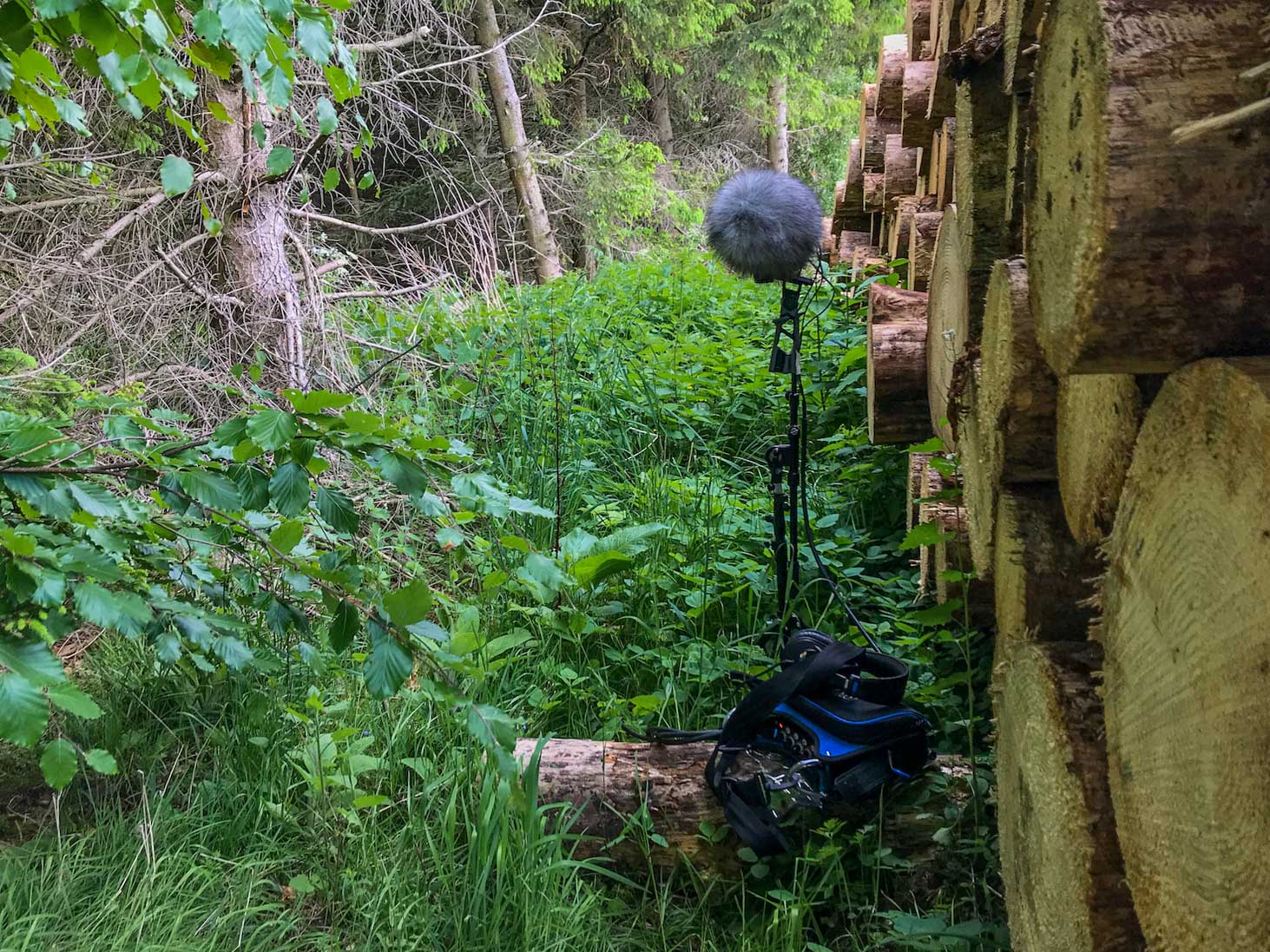
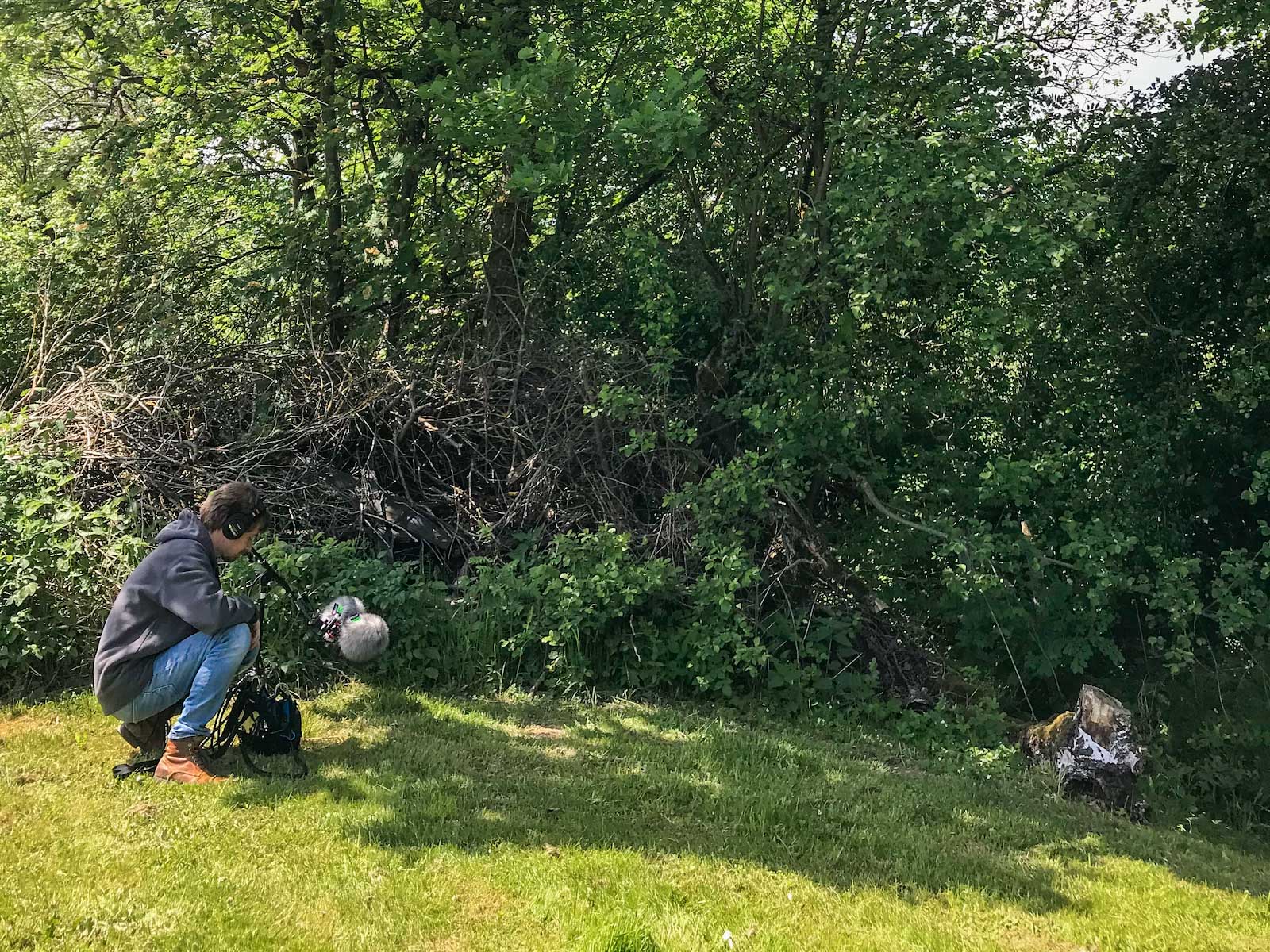
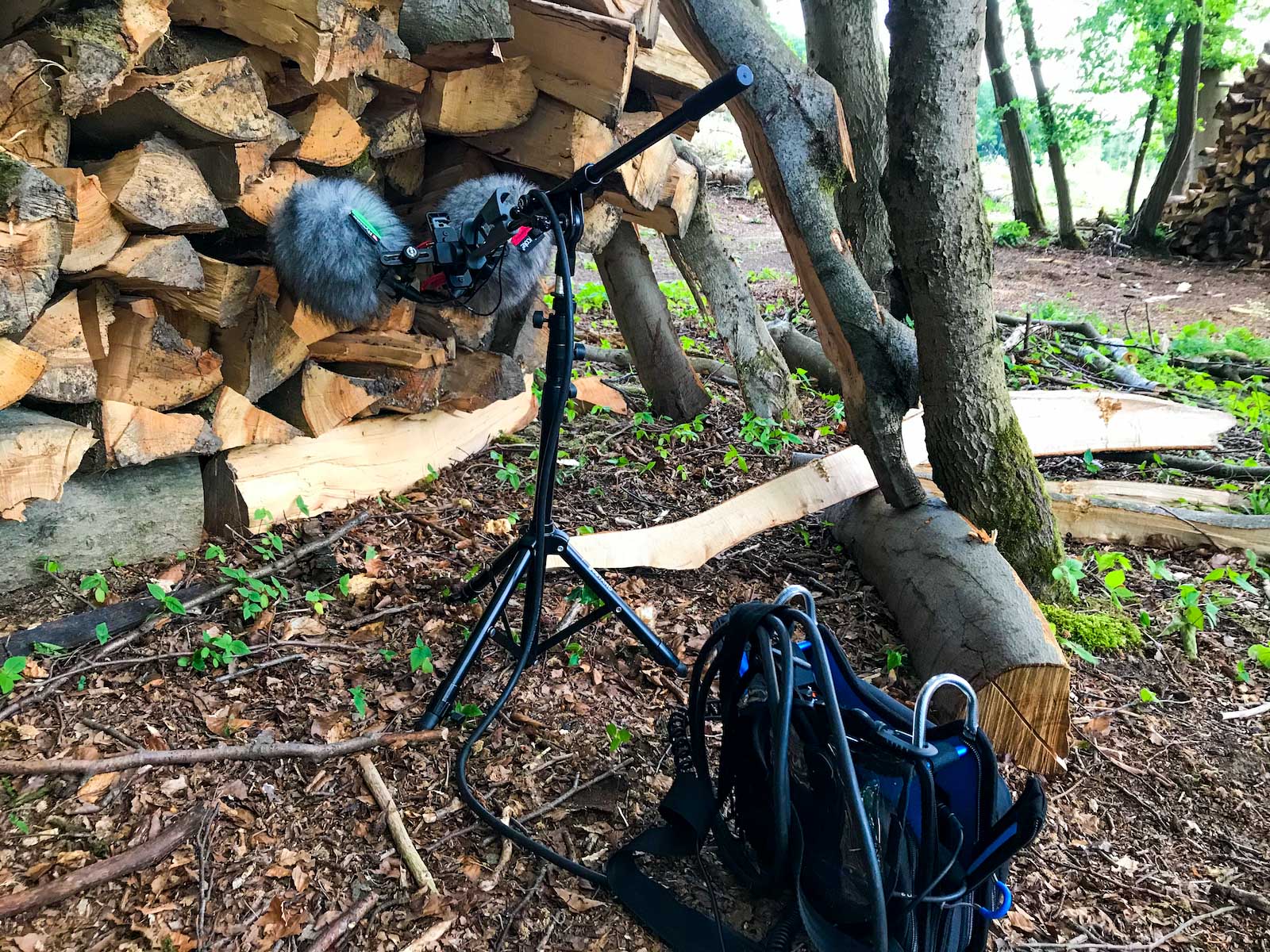
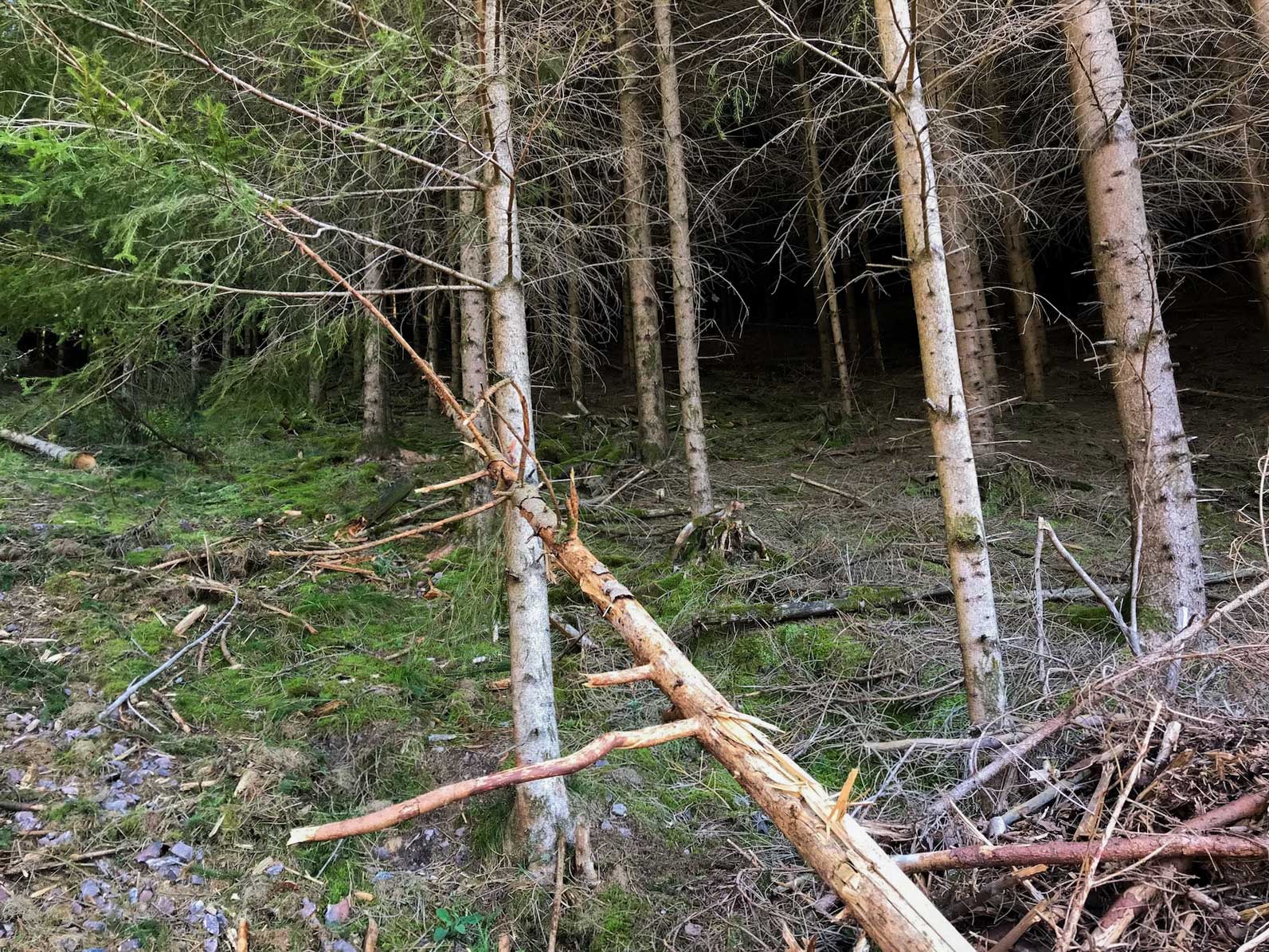
Before venturing into the forest, it’s crucial to be well-prepared. Having the right gear can make or break your recording session. During one of my multi-day recording tours, a cable broke on the first day. Without replacement equipment, the whole trip would’nt have been possible. Here is a checklist of essential items you won’t want to leave behind.
When it came to processing and editing the field recordings, my approach was to preserve natural sound. In addition to the usual editing and cutting unwanted sounds, I applied a low-cut filter to eliminate basic rumbling and only sparingly used iZotope’s RX Suite to avoid altering the original sound quality. A key feature of this library is its user-friendly navigation. The filenames indicate the time of year, time of day and the specific type of forest where each sound was recorded. For recordings featuring birds, the names of the bird species are also included in the filenames as well as in metadata, here in both English and Latin. Additionally, the geographic locations of the recordings are part of the metadata. This allows you to use regionally accurate bird sounds for your projects when needed. Many of the included bird species are also found outside of Europe, so there are no limits when working with this library.
What really fascinates me about field recording in natural environments are the unpredictable moments. In many cases, things happen that you can’t plan and often it’s a matter of luck and a lot of patience to capture the sounds you have in mind. It’s these random circumstances that make the special memories I have of recording trips. One experience that particularly stuck in my mind was a woodpecker hammering on a tree directly above me. Hearing that distinctive sound up close was awe-inspiring, but what made it truly memorable were the vibrations of the hammering that I could feel as I touched the tree trunk. Recording journeys out in nature are often more than just work; they become a kind of mindfulness practice and provide an incredible sense of connection with nature. They sharpen the perception of the fine details of the environment and anchor you firmly in the present moment. After all these trips I have learned to appreciate nature like never before.
We hope you’ve enjoyed this article about the creation of our Forest Ambiences sound library. From the challenges of recording in different environments to the unexpected joys of capturing unique natural sounds, it’s been a rewarding journey that we’re happy to share with you. With this insights and tips, you’ll now be better equipped to dive into your own recordings. If you’d like to experience these unique forest sounds for yourself, check out our Forest Ambiences sound library.
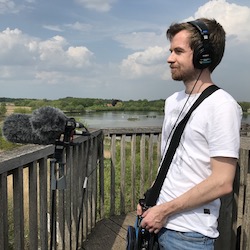
Jonas, co-founder of Just Sound Effects, is a graduated sound designer and captures field recordings all over the world, always looking for unique soundscapes and new places to explore.

All prices are net, additional VAT may apply.
By subscribing to our newsletter you agree to our privacy policy.

All prices are net, additional VAT may apply.
© 2025 JUST SOUND EFFECTS GbR – All rights reserved
By subscribing to our newsletter you agree to our privacy policy.